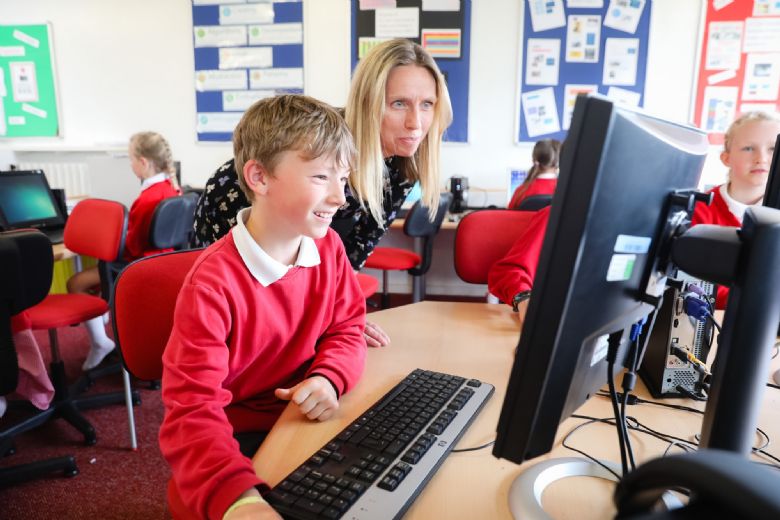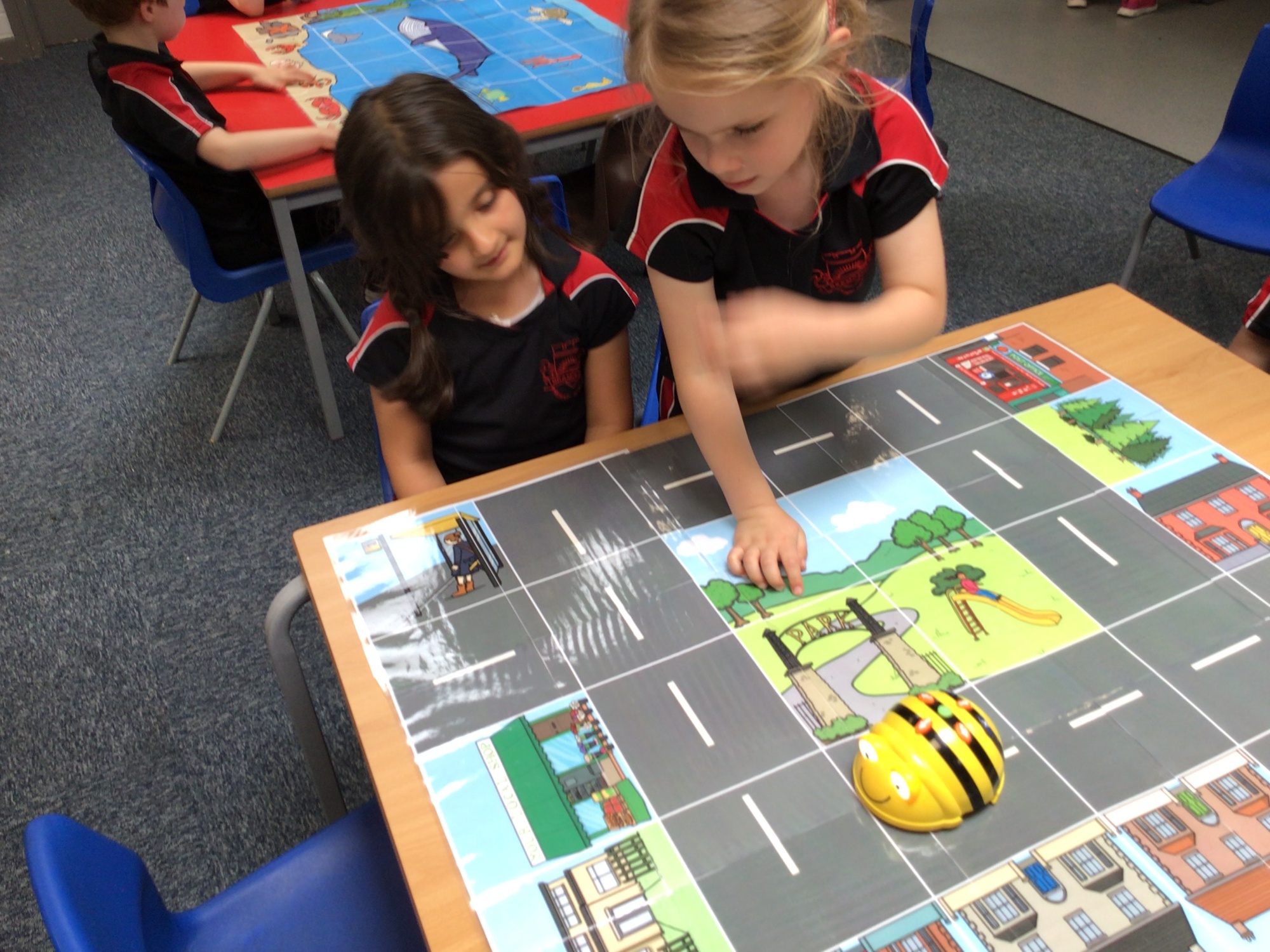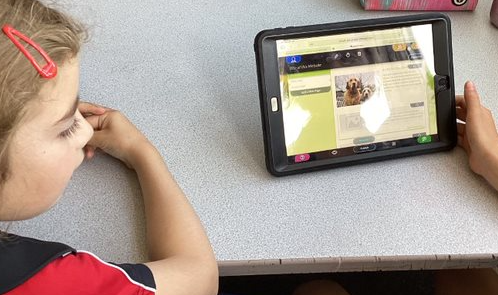Computing
Welcome to computing at Bramhope Primary School
Subject Coordinator: Mrs Schofield
Contact: lucy.schofield@bramhopeprimaryschool.co.uk
“Learning to write programs stretches your mind, and helps you think better, creates a way of thinking about things that is helpful in all domains.” Bill Gates.
Teaching computing does far more than developing children’s technical skills such as block-coding.
Good computing teaching encourages children, to thrive at being excellent communicators through the effective use of digital content, to think logically as they work through problems as well as to inform them how to make good choices as they navigate the online world. These are skills that are indispensable in their journey to secondary school and into their working lives.
What makes computing different at Bramhope?
We have developed a carefully sequenced, knowledge-rich computing curriculum, enabling children to acquire knowledge in small, sequential steps. Firstly, we have selected the essential knowledge for computing to help develop knowledge sentences. These help children remember the key knowledge they need to remember. Secondly, learning has been carefully sequenced to ensure that knowledge, skills and understanding build upon previous learning. This helps children know more and remember more, building their long-term memory over time.
To understand more about our curriculum, including the learning sequence and knowledge sentences, please refer to our knowledge overview documents in the 'curriculum documents and useful links' section below.
Our e-safety curriculum at Bramhope is informed by the needs of our pupils at Bramhope. Each year, the children create a survey which looks at key usage of online technology. It helps us to effectively understand usage and some challenges faced by the technology used. This is then woven into our e-safety curriculum alongside the government’s ‘Education for a Connected World Framework'. Our key focus is to ensure we are equipping the children at Bramhope Primary School with the key digital literacy skills to ensure that they will go on thrive in our ever-connected technical world.
In addition, we have a strong parent/pupil partnership at Bramhope. Parents share in the learning in school through regular updates via our parent newsletter and through the annual ‘Parenting in a digital world’ event led by our digital leaders. Every year, we also run a competition to involve our Bramhope families. It encourages pupils and parents to look for meaningful changes they can make to balance their digital use. Click on this link to show coverage in a recent Yorkshire Evening Post Article. Our e-safety could not be delivered without the excellent leadership from our team of Year 5 and Year 6 digital leaders.
Click here to view our online safety page.
What do lessons look like?
Each lesson starts with a key e-safety warm up. This is tailored to our key stages and year groups as appropriate. It is reinforced by our digital leaders at their half termly assembles. There is always ample opportunity for discussion as a class. As well as drawing on our learnings from our survey, we use a wide range of high quality resources ranging from Common Sense Media, Childnet and NSPCC.
Using the Hour of Code, children learn from an early age how computers work and how to program them. As they move through the school, they become more proficient, for example, by developing the use of loops. Children have time to follow sets of instructions as well as the opportunity to develop their deeper problem-solving skills through ‘de-bugging’ and the creation of their own versions of apps within the program. Please click this video to learn about the importance of coding and to learn more about the Hour of code program.
As children move into KS2, they become proficient with Microbits and this enables them to build more sophisticated programming skills and offers them the opportunity to bring their programming to life. With Microbit technology, they are able to work across the curriculum to for example, develop a step-counter for exercise, to measure the temperature in a room or to set up an experiment to look at soil moisture.
The recent acquisition of a full class set of I-pads has opened up opportunities for a wider range of programming apps which are proving very useful to embed their learning and opening up a range of animation options which we aim to develop this academic year.
In addition, children learn to master software to develop PowerPoint presentations, leaflets and other documents with cross-curricular links. They also follow units on computer science, which start to explain some details of how our different computer systems work. At Bramhope, these software skills go hand in hand with developing presentation skills to ensure they can approach secondary school with the confidence to discuss and present their learnings to a group of pupils and adults alike.
What do we mean by progress?
In computing, we return to and build on key principles each academic year with progress documented in medium term plans and end of year assessment grids. By the end of Year 6, all pupils can competently build and deliver an effective PowerPoint and be competent problem solvers when coding. They are also able to discuss key challenges around navigating their digital world.
What do we mean by assessment?
Formative assessment is used routinely in computing and learnings and misconceptions built into subsequent lessons. In coding, children are encouraged to learn from their mistakes by actively ‘de-bugging’ algorithms. Peer assessment is used when presenting PowerPoint or Microsoft word publications with a rigorous focus on how design and presentation choices have added impact to the digital content.
We also have clear end of key stage expectations and end of year expectations in computing. These are completed by class teachers at the end of the school year. As the curriculum is spiral in nature, there is opportunity to revisit these concepts the following academic year.
CURRICULUM DOCUMENTS AND Useful links



